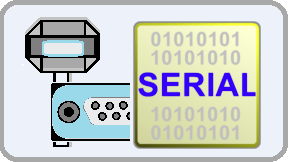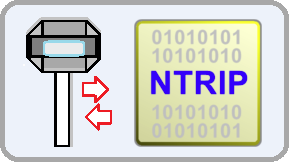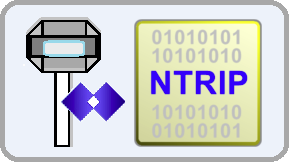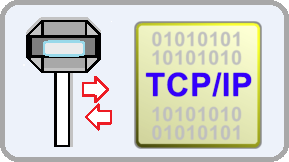 Base Station Setup:
Base Station Setup:
- Thank you for evaluating the SNIP NTRIP Caster.
SNIP has several methods to connect to GNSS Base Stations
Select which one of the four use cases below best describes your situation:
 Serial Base Station Setup
Serial Base Station Setup
The Base Station is connected to the PC running SNIP
with a serial port or a USB serial port adapter. Use this method when the GNSS Base Station does not have
either a built-in NTRIP Caster/Server or the ability to send data over the internet.
In SNIP the Serial Streams
tab is used to control all the serial connections.
In order to exchange messages, you will need to ensure that the serial port settings
(baud rate, parity, etc.) on both the GNSS device and
SNIP use the same settings.
Ensure the GNSS device will send the correct messages as well, typically RTCM revision 3, but other messages can be used.
Consult the documentation provided by the device vendor in order to correctly set that side.
 PUSH-In Connections
PUSH-In Connections
The Base Station is remote from the PC running SNIP
with internet access.
The Base Station uses its own NTRIP software to send data (acting as an NTRIP Server) to
SNIP.
[Some deployments elect to use a 2nd copy of SNIP to PUSH-Out data]
The remote Base Station initiates the connection, which may have a prior 'reservation' created for its use.
In SNIP the PUSH-In Streams
tab is used to control all the connections of this type.
- This article describes the PUSH-In tab in general.
- This article describes accepting connections from NTRIP Servers.
- This article describes how the Reservation process for PUSH-In works.
- This article discusses editing a reservation when the connection is active.
 Relay Connections
Relay Connections
The Base Station is remote from the PC running SNIP
with internet access.
The Base Station has its own NTRIP Caster
(built-in, or SNIP, or any other Stds conformance Caster).
In this configuration
SNIP connects to the remote
NTRIP Caster (as an NTRIP Client) and then
relays data from the remote connection back for use.
Here SNIP initiates the connection.
[Many GNSS Base Stations have a simple Caster that can send its single data stream to users.]
In SNIP the Relay Streams
tab is used to control all the connections of this type.
- This article describes the Relay Streams tab in general.
- This article covers the step used to add a Relay Stream to your copy of SNIP.
- This article describes a setup wizard for Relay Streams.
 Raw TCP/IP Connections
Raw TCP/IP Connections
The Base Station is remote from the PC running SNIP
with internet access but does not have a NTRIP Caster of its own.
Nor is a copy of SNIP
available for use. These are typically older GNSS Base Stations.
In this configuration the remote Base Station connects to SNIP
but is unable to follow the NTRIP protocol.
SNIP accepts the data on a dedicated port for each remote device
and uses its ability to auto-parse the data to create a correct Caster Table entry.
Here SNIP creates an active server socket at the defined port, then waits for the remote GNSS device to initiate the connection.
In SNIP the Raw TCP/IP
tab is used to control all the connections of this type.
- This article describes the Raw TCP/IP tab in general.
- This article covers the step used to add a Raw TCP/IP connection to your copy of SNIP.
Note: The Raw TCP/IP feature is not available in the Lite model of SNIP.
More text to be added here
 Base Station Setup:
Base Station Setup: Base Station Setup:
Base Station Setup: Serial Base Station Setup
Serial Base Station Setup PUSH-In Connections
PUSH-In Connections Relay Connections
Relay Connections Raw TCP/IP Connections
Raw TCP/IP Connections